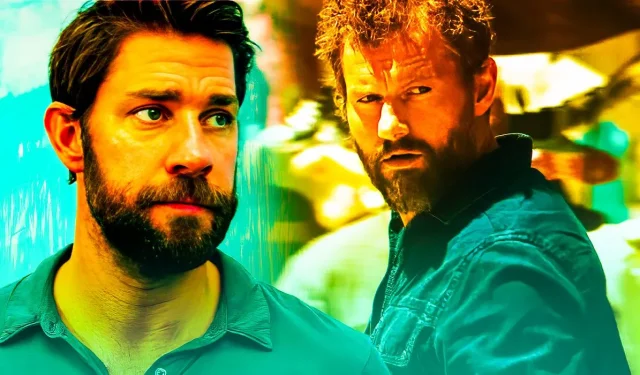
Exploring the Film “13 Hours: The Secret Soldiers of Benghazi”
Released in 2016 and directed by Michael Bay, 13 Hours: The Secret Soldiers of Benghazi dramatizes the real events surrounding the terrorist attack on the U.S. diplomatic facility in Libya. The account focuses on a group of six soldiers who valiantly defended the U.S. Ambassador against hostile militants. The ensemble cast features notable actors such as John Krasinski, James Badge Dale, Max Martini, Dominic Fumusa, and Pablo Schreiber. Although the film garnered mixed reviews, it impressed audiences with its commitment to portraying the harrowing reality of war, earning a box office total of $69.4 million.
Unpacking the Benghazi Attack of 2012
On the evening of September 11, 2012, a group affiliated with the Libyan terrorist organization, Ansar al-Sharia, executed a coordinated assault on two American diplomatic facilities in Benghazi. This infamous attack claimed the lives of four Americans and has since become a focal point of political discussion and analysis.
The Attack’s Initiation
The assault began at the U.S. diplomatic compound, where U.S. Ambassador J. Chris Stevens was staying. Subsequently, the terrorists extended their attack by launching a mortar assault on a nearby CIA annex. Initial thoughts suggested that the attack was a spontaneous reaction to protests, but investigations later determined that it was a well-coordinated, premeditated act of terrorism.
Political Reactions
Significantly, the Obama administration faced extensive scrutiny regarding its handling of this crisis. However, investigations concluded that the administration acted appropriately and did not incite further violence. In the aftermath, two suspects linked to Ansar al-Sharia were apprehended: the group’s leader, Ahmed Abu Kattala, in 2014, and Mustafa al-Imam, captured in 2017. The local Libyan government condemned the attack, showcasing solidarity when 30,000 Libyans protested against Ansar al-Sharia.
Casualties of the 2012 Attack
Tragic Losses Among American Citizens
The tragic events resulted in the deaths of four American citizens, including Ambassador J. Chris Stevens and Information Officer Sean Smith. Stevens, who served as the U.S. Ambassador to Libya until his untimely death, was the first U.S. ambassador to be killed in an attack in over three decades. Both he and Smith were lost during the initial wave of the assault on the diplomatic compound.
| Name | Position | Age |
|---|---|---|
| J. Chris Stevens | U.S. Ambassador | 52 |
| Sean Smith | Information Officer | 34 |
| Tyrone Woods | CIA Operative | 41 |
| Glen Doherty | CIA Operative | 42 |
The other two Americans who lost their lives were CIA operatives Tyrone Woods and Glen Doherty, both of whom played vital roles in the defense of the CIA annex during the attack. Woods, a decorated veteran of the U.S. Navy, and Doherty, who had previously participated in daring rescue missions, were tragically killed when their defensive position was targeted by enemy fire.
The Bravo of the GRS Team During the Attack
The film highlights the bravery of the Global Response Staff (GRS) team, led by individuals such as Jack Silva, portrayed by John Krasinski. This team valiantly defended the CIA annex during the tumultuous night.
Jack Silva
While the character of Jack Silva is based on a real figure who opted to remain anonymous, the film uses an alias to maintain his privacy. Despite his desire to stay out of the spotlight, Silva collaborated with Krasinski to ensure his story was accurately represented.
Tyrone Woods
James Badge Dale’s portrayal of Tyrone Woods depicts a real American hero who tragically lost his life trying to protect others. Woods engaged directly with militants in an effort to defend both the ambassador and the CIA annex, ultimately succumbing to injuries sustained in combat.
Mark “Oz”Geist
As a dedicated member of the GRS team, Mark Geist, known as Oz, aided in protecting the ambassador and endured injuries, including shrapnel wounds, during the fight against Ansar al-Sharia
John “Tig” Tiegen
John Tiegen (Tig) served as a pivotal member of the GRS team, providing critical support during the attacks. His military experience was essential to the team’s efforts to counter the waves of assault from the militants.
Kris “Tanto” Paronto
Kris Paronto, or Tanto, was integral to the defense strategies employed by the GRS team, taking on significant risk to help protect U.S. interests in the region.
Dave “Boon”Benton
Lastly, Dave Benton, known as Boon, demonstrated exceptional commitment to his mission, helping ensure the safety of personnel during the attack.
Aftermath and U.S.-Libya Relations
Following the Benghazi attack, Libyan officials issued strong condemnations of the violence and expressed remorse for the incidents. Prime Minister Mustafa Abushagur’s statement reaffirmed Libya’s commitment to combating terrorism and fostering stronger relations with the United States.
This incident opened dialogues between the two nations, enhancing mutual support and cooperation, especially regarding investigations into the predilections leading to the attack.
The Controversy Over U.S. Response
The U.S. government’s response to the Benghazi attack became a heavily debated issue, with critiques directed at the Obama administration for its messaging and handling of security protocols leading up to the incident. Allegations surfaced, claiming that officials failed to heed warnings regarding heightened security risks.
Analyzing the Film’s Accuracy
Critics have scrutinized the film’s portrayal of events, particularly its depiction of a supposed stand-down order issued by the CIA chief. This element has sparked conspiracy theories that stray from verified facts, detracting from the film’s overall credibility.
13 Hours: The Secret Soldiers of Benghazi focuses on heroism against the backdrop of chaos, but its narrative choices have drawn attention to broader implications surrounding the actual events, leading to varying interpretations of its accuracy and artistic license.




Leave a Reply